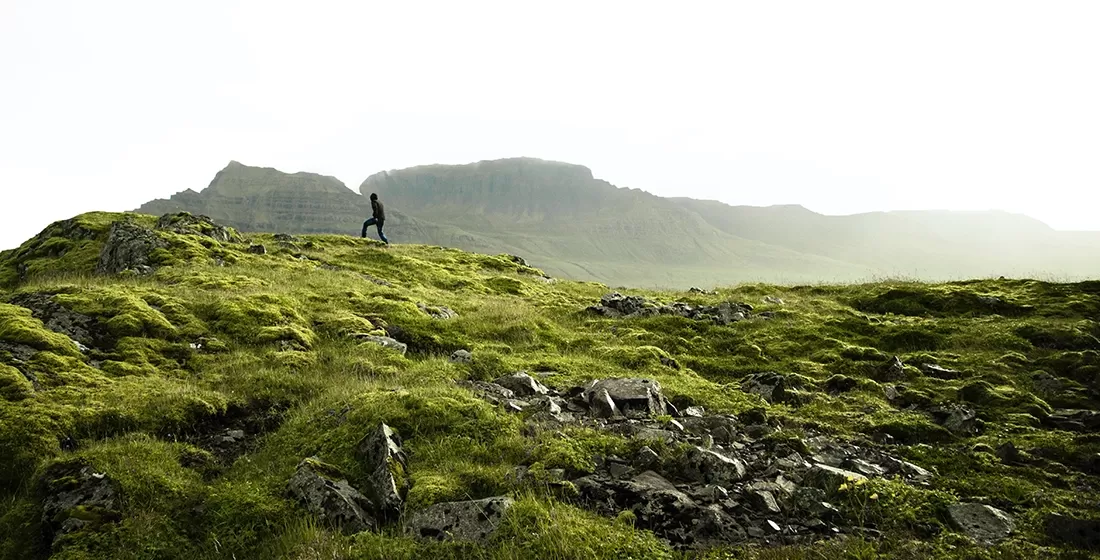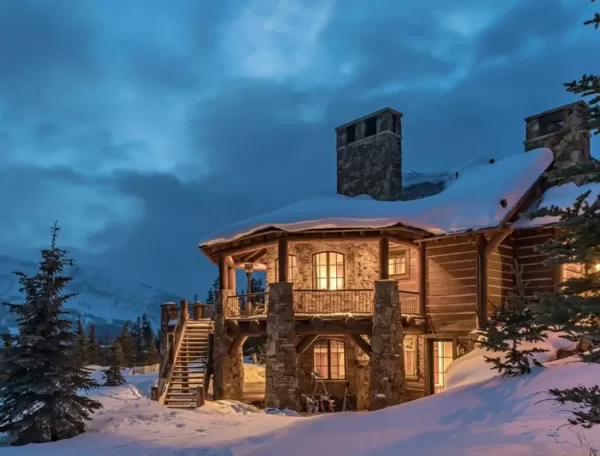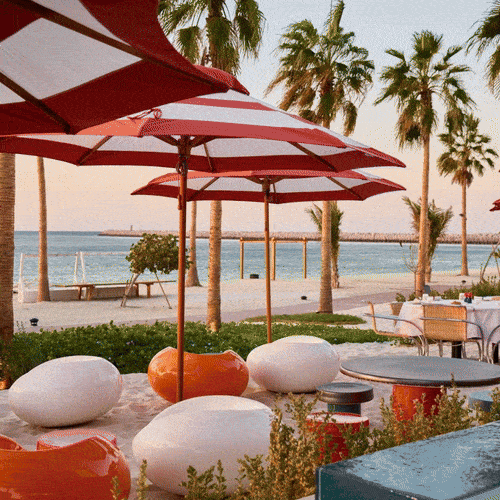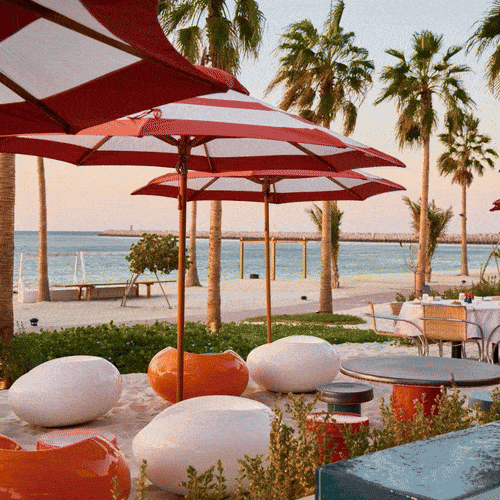The wind whispered up Offas Dyke, jangling the icicle-encased trees and rustling the corners of our crinkled OS map. The path we'd just crunched was stamped into the ice behind us, and ahead lay Wales, its patchwork fields hibernating under a blanket of unseasonable snow. My companion pointed a mittened finger at the next landmark on the map: a pile of stones, almost concealed by a layer of ice.
This slinking hill is Offa's Dyke – the 177-mile path dividing England from Wales that stretches from the Irish Sea to the Seven Estuary. It was purportedly built in the 8th century on the orders of King Offa as a defensive structure to segment the Kingdom of Mercia from Powys (Wales). It spans eight counties, crosses the border between England and Wales over 20 times, and is usually an immensely popular hiking route for anyone with a pair of boots and an OS map. However, at this snowy spot somewhere near Llanthony, there's not a soul to be seen.
With an altitude of 703m, Offas Dyke is not a mountain by any means. The turret of the closest, Waun Fach, protrudes out of the ground 10km to the north and, in the distance, the talons of the Brecon Beacons twist out of the ground like a dragon's knobbly knuckles. However, what Offas Dyke does offer is a soft adventure.
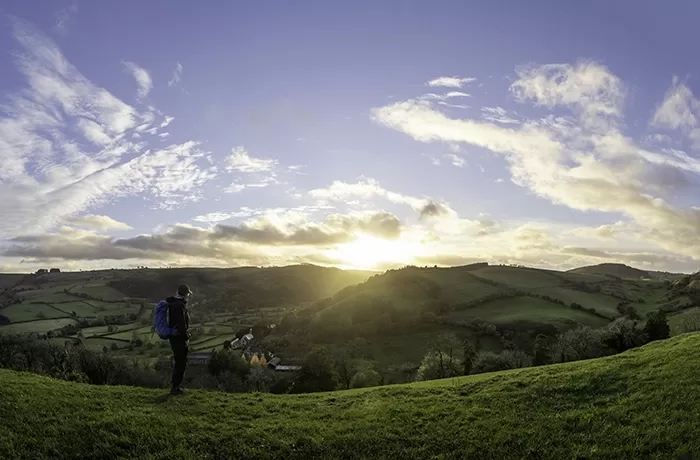
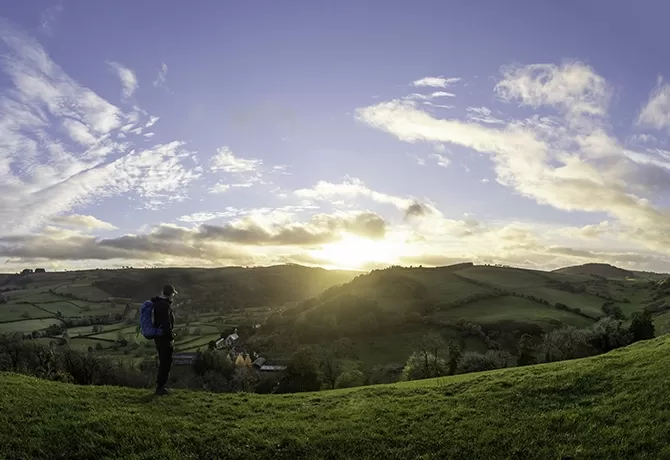
Offa’s Dyke
Soft adventures are gaining momentum. They're trips that plunge you into nature's gnarly arms with the lifeline of a well-trodden footpath and a roll-top bath waiting on your return. It could be a digital detox in an 'isolated' cabin that's really only ten minutes from the nearest city or a kayaking tour that arrives at a boat-fresh fish restaurant. One hotel in St Lucia even offers a hiking butler service, in which you choose your route up a mountain from a 'hiking menu' and are rewarded for your efforts with a champagne picnic.
It's the offline nature of soft adventuring that makes it popular. Indeed, as indicated by recent reports from OS and the American Automobile Association, paper map sales are on the up as we collectively log off and head for the outdoors. It's certainly what enticed me to swap London's thrumming veins and shrill sirens for an ancient maze of towering hedgerows and footpaths ambling skyward.
I've been to this patch of Herefordshire twice. My first visit was characterised by rain, which swept over the hills and far away on a conquest to turn every valley a lush green. This time, it's snow that transforms the landscape, the daffodils encased in icy cages, and every wrinkle of the dyke smoothed by a knee-grazing carpet of white.
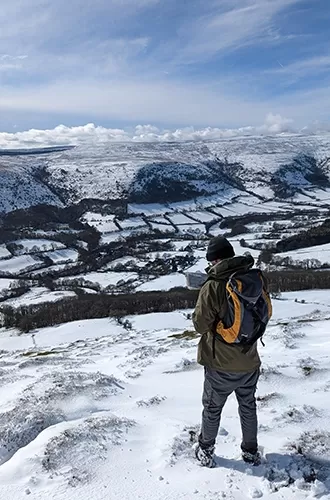

It is utterly silent. Even the birds seem to hold their breath; the only sound for miles is the blood pounding in my ears. I'm starting to think about how refreshing it is to be away from everything and anything when – with almost uncanny timing – the silence is shattered by the chime of an email as a scrap of reception wings over the valleys. At least I can now find myself on a map.
'We moved out here during the pandemic when the kids were small.' A few hours later, and five miles of somewhat strenuous hiking done, we chatted with a local family in a pub in the equally tiny village of Clodock. Locally brewed beers and ciders are thrust through a hatch that, as far as we can tell, leads directly into the landlady's personal kitchen. A procession of soggy boots steams next to the open fire.
'We realised that we weren't using London at all and wanted the kids to grow up somewhere nice,' the mother continues, turning the page of the book about tractors that her small son is reading. 'There's no fast train from London – it's a bit of an in-between place.’
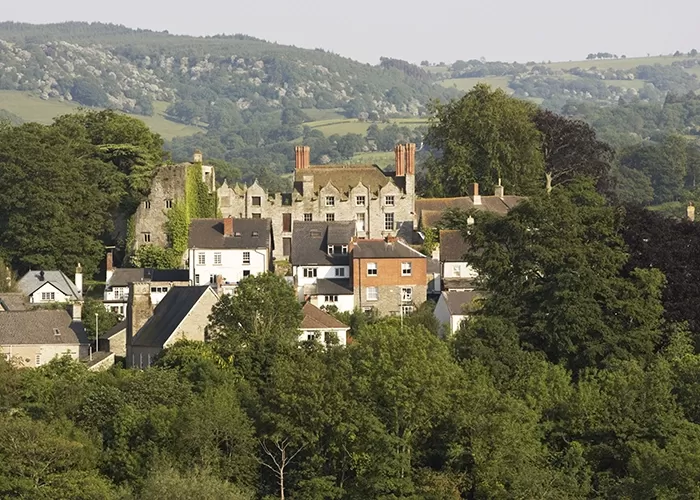
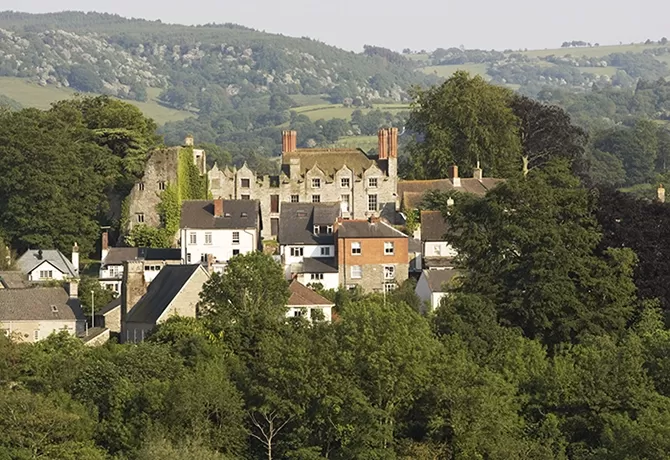
Hay-on-Wye
What it lacks in rail links, however, Herefordshire more than makes up for in culture. A 12-mile pace north from Clodock along the rippling Cat's Back brings you to Hay-on-Wye – a tiny, bookish town with one boot in both England and Wales. It's a place for clipping over cobblestones, ducking under bunting, and hiding from the rain in an antique bookstore: a different kind of digital detox.
It's also the home of what Bill Clinton called 'the Woodstock of the mind': Hay Festival of Literature and Arts. Every May, thousands of thinkers and readers pick over the cobblestones, attracted by the prospect of 10 full days of storytelling and thought-sharing and perhaps book shopping (there are 31 bookstores in Hay – one for every 59 residents).
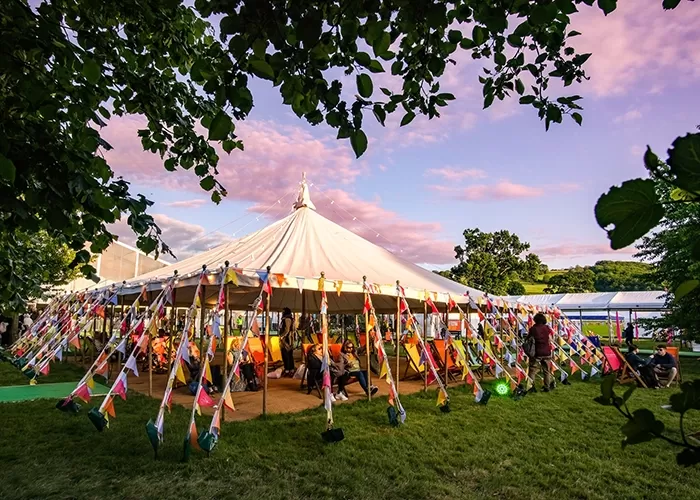

Hay Festival of Literature and Arts
The oldest is Richard Booth's, a three-tiered celebration cake of a shop that opened in 1962. It's exactly what you want a bookstore to be: curling staircases, sloping wooden beams, squashy armchairs, and shelf after shelf of books. My fingers linger on the spine of an 1888, gold-glinted Shakespeare volume before falling onto a battered old tome describing the local area. On the first page is a map of Offa's Dyke from 50 years prior, traced in fading black ink and describing it as 'the most marvellous walk'. Sometimes there's a joy in taking the road most travelled – especially when it wings you into the hills once more.
Where to stay
Westbrook Court, Hay-on-Wye
Westbrook Court Herefordshire, Hay-on-Wye HR3 5SY
About three miles from Hay-on-Wye, this 17th-century, wisteria-clad farmhouse is owned and operated by an interior designer. It sleeps up to 18 across nine wonderfully whimsical rooms – perfect for a group escape to the hills.
Pensons at Netherwood Estate
Pensons Yard, Tenbury Wells WR15 8RT
This Michelin-starred restaurant on the Herefordshire-Worcestershire border also has two bedrooms in its courtyard garden. Refuel from a day spent outdoors with dishes plucked from the fragrant gardens, then bunker down in the mint-green bedrooms.
Bridge Farmhouse
Michaelchurch Escley, Hereford HR2 0JW
If you don't want to stray too far from the Welsh border, this no-frills B&B is ideal. Stays are refreshingly simple: breakfast is served on-site, there's a pub next door, and a distillery and coffee roaster can be found in the village.
Escaping is easy with Quintessentially. We'll plan every element of your trip for you – so all you need to do is turn up. To find out more about membership, click here.










